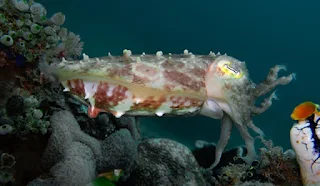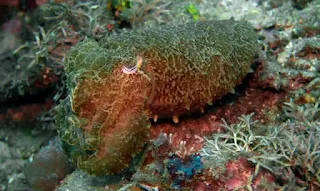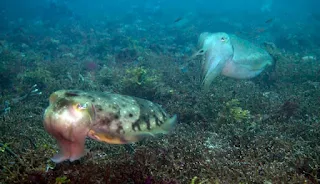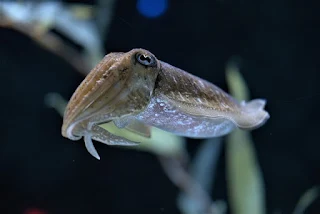Master of Disguise: Unveiling the Mysteries of the Cuttlefish
Table of Contents
Introduction: The Enigmatic Cuttlefish
Anatomy and Physiology: The Wonders Beneath the Surface
Camouflage Capabilities: A Cloak of Invisibility
Communication and Behavior: The Language of Cuttlefish
Feeding Habits: Hunters of the Deep
Reproduction: Mating Rituals and Parental Care
Ecological Importance: Guardians of Marine Ecosystems
Threats and Conservation: Safeguarding the Cuttlefish
Conclusion: Embracing the Fascination of Cuttlefish
1: Introduction: The Enigmatic Cuttlefish
When you explore the ocean, you'll encounter a fascinating creature called the cuttlefish.
This mesmerizing creature has intrigued marine enthusiasts and scientists for many years, thanks to its intriguing behavior and striking appearance.
From its incredible ability to blend in with its surroundings to its complex communication methods, the cuttlefish never ceases to amaze us.
2: Anatomy and Physiology: The Wonders Beneath the Surface
The cuttlefish boasts a unique anatomy that differentiates it from its cephalopod relatives.
Its bodies are adorned with chromatophores, specialized cells that allow it to change color and texture with astonishing speed and precision.
These chromatophores, iridophores, and leucophores work together to create an impressive array of patterns and hues, enabling the cuttlefish to blend seamlessly into its surroundings.
3: Camouflage Capabilities: A Cloak of Invisibility
Transitioning seamlessly between hues and patterns, the cuttlefish employs camouflage for concealment, communication, and hunting.
By mimicking the colors and textures of their surroundings, they evade predators and ambush unsuspecting prey.
This remarkable ability to blend in with the environment has earned them the nickname "masters of disguise."
4: Communication and Behavior: The Language of Cuttlefish
Beyond their camouflage prowess, cuttlefish communicate through various visual signals and displays.
From intricate body patterns to vibrant color changes, these cephalopods convey information about their mood, intentions, and social status.
Their communication repertoire also includes unique postures and movements, allowing them to interact with conspecifics and navigate the complexities of underwater life.
5: Feeding Habits: Hunters of the Deep
Equipped with keen senses and agile tentacles, cuttlefish are skilled predators in the marine ecosystem.
They primarily feed on small fish, crustaceans, and mollusks, using their tentacles to capture prey with precision and efficiency.
Their voracious appetite and cunning hunting tactics make them indispensable players in maintaining the balance of oceanic food webs.
6: Reproduction: Mating Rituals and Parental Care
During the mating season, male cuttlefish engage in elaborate courtship displays to attract females.
These displays often involve vibrant color changes, intricate body movements, and visual signals to demonstrate their fitness and prowess.
Once mating is successful, female cuttlefish lay clusters of eggs, which they carefully attach to underwater structures. Some species exhibit remarkable parental care, guarding the eggs until they hatch and ensuring the survival of their offspring.
7: Ecological Importance: Guardians of Marine Ecosystems
As apex predators, cuttlefish play a crucial role in regulating the populations of their prey species, thereby contributing to the overall health and stability of marine ecosystems.
Their presence helps control the abundance of smaller organisms, preventing unchecked population growth that could disrupt the delicate balance of the underwater world.
Additionally, cuttlefish serve as prey for larger predators, emphasizing their importance in marine food chains.
8: Threats and Conservation: Safeguarding the Cuttlefish
Cuttlefish are fascinating creatures that play a crucial role in maintaining the ecological balance of their habitat.
However, they face various threats in their natural environment, which can significantly impact their populations.
One of the most significant threats is overfishing, which can cause a decline in their numbers and disrupt the food chain.
Habitat destruction is another significant threat, as it can displace cuttlefish from their natural environments, reducing their chances of survival.
Additionally, pollution can also have a detrimental impact on cuttlefish populations, affecting their health and well-being.
Climate change also poses a significant threat to cuttlefish populations, as rising ocean temperatures and ocean acidification can profoundly impact their habitat and prey availability.
These changes can affect their ability to find food, reproduce, and survive, leading to declining populations.
Various conservation efforts are underway to protect cuttlefish populations. These include creating protected marine areas with a safe and secure environment for cuttlefish to thrive.
Sustainable fishing practices are also promoted to ensure that cuttlefish populations are not overexploited.
Public awareness campaigns are also being conducted to increase awareness about the importance of cuttlefish conservation and the threats they face in their natural habitats.
By working together, we can help ensure the survival of these fascinating creatures for future generations to enjoy.
9: Conclusion: Embracing the Fascination of Cuttlefish
In conclusion, the cuttlefish continues to captivate and inspire with its extraordinary abilities and mysterious allure.
From its mesmerizing camouflage tactics to its complex social behaviors, this enigmatic creature reminds us of the marvels that await discovery beneath the waves.
By understanding and appreciating cuttlefish's importance in marine ecosystems, we can work together to ensure their conservation and safeguard their future for generations to come.
Frequently Asked Questions
Q: How do cuttlefish change color?
A: Cuttlefish change color through the contraction and expansion of chromatophores, specialized skin cells containing pigments. By controlling the size and distribution of these cells, cuttlefish can create a wide range of colors and patterns.
Q: Are cuttlefish intelligent?
A: Yes, cuttlefish are highly intelligent creatures, capable of learning and exhibiting complex behaviors. They have demonstrated problem-solving skills, memory retention, and social interactions that suggest a high level of intelligence.
Q: Can cuttlefish see color?
A: Yes, cuttlefish have excellent color vision and can perceive a wide range of colors in their environment. Their ability to change color and pattern is not only for camouflage but also for communication and signaling to other cuttlefish.




Comments
Post a Comment